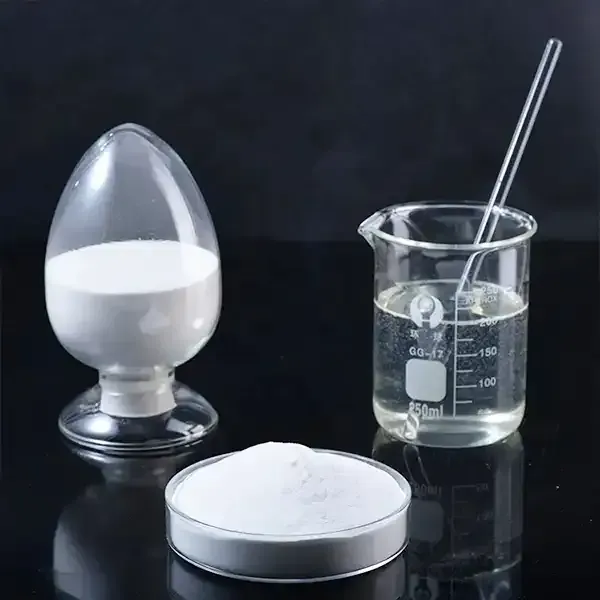Understanding Cellulose Ethers Their Properties and Applications
Cellulose ethers are a group of derivatives of cellulose, a natural polymer derived from plant cell walls. By chemically modifying cellulose, particularly its hydroxyl groups, cellulose ethers are created, resulting in materials that exhibit unique properties and a wide array of applications. These modifications typically involve the substitution of the hydroxyl groups with etherifying agents, leading to products such as methylcellulose, hydroxypropyl methylcellulose (HPMC), and carboxymethyl cellulose (CMC). Understanding these materials is crucial for their effective application across various industries.
Chemical Structure and Properties
The backbone of cellulose ethers is the cellulose polymer, which consists of linear chains of glucose units linked by β-1,4-glycosidic bonds. This arrangement provides cellulose with its structural integrity. When etherification occurs, the hydrophilic nature of cellulose is altered, allowing cellulose ethers to possess amphiphilic characteristics. This transformation results in water-soluble and water-retentive properties, making them ideal for applications requiring thickening, emulsification, and film-forming capabilities.
The degree of substitution, that is, the number of hydroxyl groups replaced by the etherifying agent, significantly influences the solubility and viscosity of cellulose ethers. For example, methylcellulose is soluble in water at elevated temperatures but forms a gel upon cooling—an ability that is exploited in various food and cosmetic products. Meanwhile, HPMC and CMC are prized for their enhanced film-forming and thickening abilities, lending them critical roles in pharmaceutical formulations and construction materials.
Applications in Various Industries
1. Pharmaceutical Industry Cellulose ethers are widely used in the pharmaceutical sector for drug formulation. They serve as binders, disintegrants, and controlled-release agents, enhancing the bioavailability of drugs. Their gelling and thickening properties allow for the creation of suspensions and gels that improve medication stability and patient compliance.
cellulose ethers

2. Food Industry In the food industry, cellulose ethers are utilized as thickening agents, emulsifiers, and stabilizers. They enhance the texture of food products, such as sauces, ice creams, and dressings, while also improving mouthfeel and shelf-life. The food-grade variants, such as CMC, are especially significant in gluten-free baking, as they help to retain moisture and provide structure.
3. Construction Industry Cellulose ethers are integral to the production of construction materials, such as cement and plaster. They improve workability, water retention, and adhesion properties. The inclusion of cellulose ethers prevents cracking and enhances the strength of the final product, thus offering better performance in construction applications.
4. Cosmetic and Personal Care In cosmetics, cellulose ethers function as thickeners and emulsifiers, contributing to the stability of creams, lotions, and gels. Their ability to form a smooth film makes them popular in skin and hair care formulations, providing a pleasant sensory experience to users.
Environmental Considerations
As cellulose ethers originate from renewable resources, they present a more environmentally friendly alternative to synthetic polymers. The biodegradability associated with these materials aligns well with the growing demand for sustainable products in today’s market. However, the production processes of cellulose ethers still require caution to ensure that they do not contribute to environmental degradation.
Conclusion
Cellulose ethers represent a versatile category of materials that bridge the gap between nature and technology. Their unique properties and adaptability have led to their incorporation in numerous industries, making them invaluable in our daily lives. As research and development continue, the potential for new, innovative uses for cellulose ethers seems boundless, reinforcing the necessity of understanding these remarkable compounds.
-
Rdp Powder: Key Considerations for Wholesalers in the Building Materials IndustryNewsJul.08,2025
-
Key Considerations for Wholesalers: Navigating the World of Hpmc - Based ProductsNewsJul.08,2025
-
Hpmc Detergent: Key Considerations for WholesalersNewsJul.08,2025
-
Key Considerations for Wholesalers: China Hpmc For Tile Adhesive, Coating Additives, Concrete Additives, and MoreNewsJul.08,2025
-
Crucial Considerations for Wholesalers: Navigating the World of Construction MaterialsNewsJul.08,2025
-
Key Considerations for Wholesalers Sourcing Additive For Cement, Additive For Concrete, Additive For Putty from Additive Manufacturer Shijiazhuang Gaocheng District Yongfeng Cellulose Co., Ltd.NewsJul.08,2025




